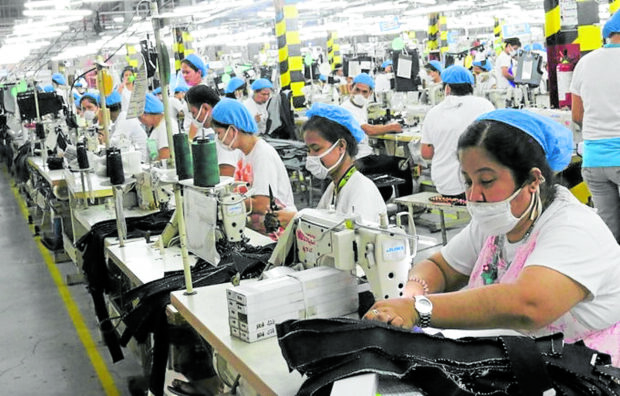Local factories buck regional slump, on 2-mo growth streak

HUMMING ALONG Local factories have recorded an uptick in sales due to “solid” demand for Filipino products. —PHOTO FROM FACEBOOK OF THE MEPZ WORKERS ASSOCIATION
MANILA -Philippine factories entered the final quarter of the year on expansion mode, defying a regional slump as strong demand kept the local manufacturing sector humming for the second straight month.
A survey of 400 companies showed the Philippines’ Purchasing Managers’ Index (PMI)—a closely watched gauge of factory performance—rose to 52.4 in October from 50.6 in September, S&P Global said in a report on Friday.
The latest PMI reading stayed above the 50-mark separating growth from decline.
At the same time, the figure marked the second straight month of output expansion for Filipino manufacturers, bucking a regional deterioration after the headline PMI for Southeast Asia remained on contraction mode in October at 49.6.
Maryam Baluch, economist at S&P Market Intelligence, said the Philippines’ impressive PMI score last month was supported by strong growth in two fronts: new orders and output.
“Operating conditions improved at the strongest pace in seven months,” Baluch said in a commentary.
‘Renewed rise’ in new orders
Survey results showed local factories recorded an uptick in sales due to “solid” demand for Filipino products, with companies reporting a “renewed rise” in fresh orders from markets abroad and a bigger client base.
Demand surged as easing inflationary pressures last month tempered production costs. This, in turn, led to a “slower” increase in selling prices that made locally made products more affordable and competitive, S&P reported.
Companies reported hiring more workers for the second straight month to meet the uptick in new orders. The additional headcount, in turn, helped factories reduce their backlogs, with levels of unfinished work depleting at the sharpest pace in nearly two years in October, S&P said.
READ: Jobless, underemployment rates fell in August
Moving forward, over a third of Filipino manufacturers polled by S&P are expecting growth in output over the coming year. This prompts factories to continue building up their inventory of raw materials in anticipation of higher demand.
But business confidence among local manufacturers weakened to a 16-month low in October, survey data showed. According to S&P’s Baluch, rising borrowing costs and global headwinds “remain a downside risk to the sector.” INQ
